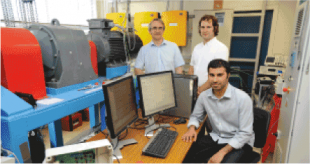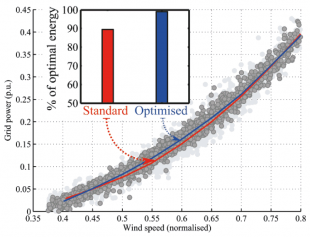Efficiency Challenge and Real Time Adaptive Control Solution
A significant number of in service wind turbines are operating sub-optimally. This is due to a number of reasons, not least the one-time setting of key parameters during commissioning of the turbine, with the inability to recalibrate in real time to account for variation in factors such as local wind conditions, site topography, component manufacturing tolerances and component matching.
A team at the University of Edinburgh has developed a patent pending control algorithm to overcome the shortcomings highlighted above. This is achieved through a set of algorithms operating in tandem with the wind turbine controller software, analysing key performance data to model real world losses. Turbine controller parameters are then dynamically modified to match the real world losses, to the theoretical best case, thus maximising turbine efficiency.
Whilst the parameter set points may be changed by the software, the integration of the algorithms with the existing controller software ensures that safe operating limits, for example rotor speed or generator temperature, are not exceeded.
Project Status
The initial evaluation from modelling and field trials has been encouraging. In one trial carried out on a pre-production machine, gains of around 6% were achieved. The project is now moving to the next stage of development and market validation, initially on medium size turbines of up to 1MW. As a secondary application, we are also in discussion with manufacturers operating in the wave and tidal arenas.
As part of this next stage of development, The University of Edinburgh is seeking the cooperation of partner companies in steering and validating the technology. This will be carried out purely on the basis of two way exchange of data under a Non-Disclosure Agreement (NDA).
Patents
The University of Edinburgh are currently seeking a number of patents for the protection of this technology.
Project Funding
Power Enable Solutions are proudly funded by:




